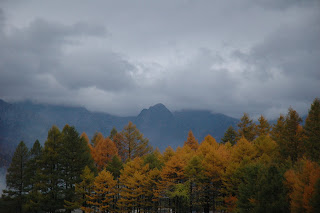 |
| Kyoto Botanic Garden |
 |
| Ginkgo biloba at Kyoto Botanic Garden |
 |
| Tom & Ben with staff from Kyoto BG |
 |
| Makino Botanic Garden |
 |
| Herbarium vouchers at Makino BG Herbarium |
 |
| The view from Makino BG across to Kochi |
 |
| Lagerstroemia subcostata |
 |
| Kochi National Park |
Our third week has seen Tom and I travel down to Kyoto, then onto Kochi, which is situated on the island of Shikoku. At Kyoto, Mr. Nagasawa and his team met us, and had kindly put together an itinerary for the next couple of days. This allowed us to assess the collection sites for next year and establish some important contacts that will hopefully aid us in our permit applications.
The Botanic Garden was established in 1924, and despite a period of disuse between 1946 & 1962, showcases an impressive collection of plants, with almost 12,000 species.
Out in the field, it was great to have the support of Mr.Nagasawa and his team guiding us through some fascinating sites and assisting with the identification of some of the local flora.
For the next leg after Kyoto, we visitied Kochi, home to Makino Botanic Gardens. This visit was greatly anticipated as everywhere visited previously, had commented on how this was the best Botanic Garden in Japan.
Named after the eminent Japanese botanist Dr. Tomitaro Makino, the Garden was opened to the public in 1958. Within the 6 hectares, over 3,000 species of plant are on display, one of the reasons the Ministry of Education, Culture & Science recognized the Garden as a statutory Research Institute in 2003.
Dr. Tanaka kindly gave up his weekend to show Tom and I around the locality, where we visited a range of flora from sea level to almost 2,000m. The Sunday was slightly hampered by 4 hours of incredibly heavy rain, but this did not deter our enthusiasm!
























